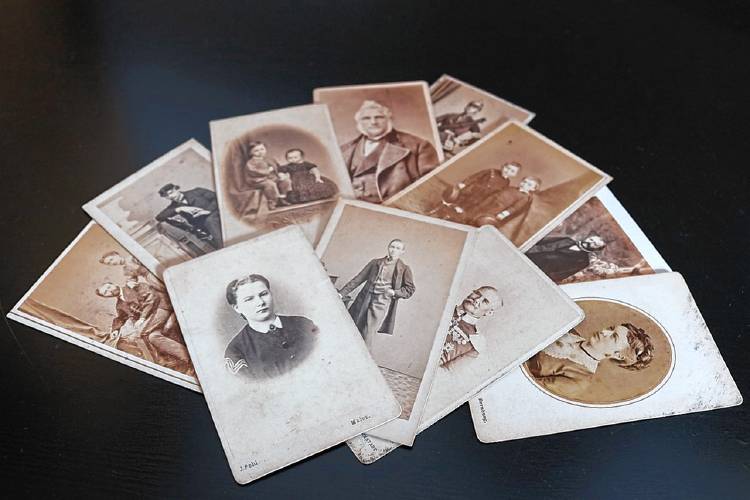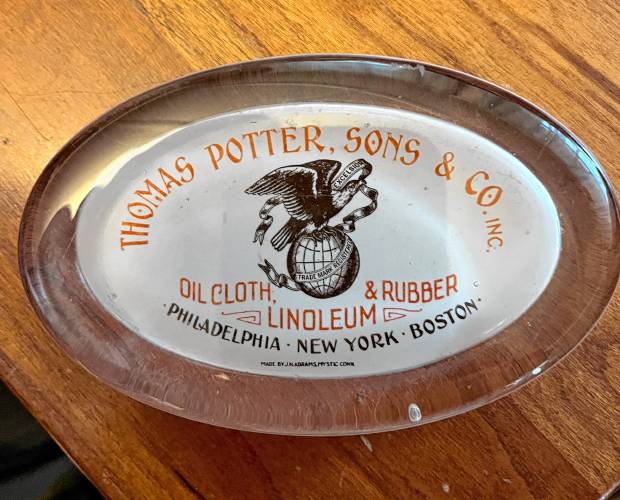Opinion: Climbing my family tree
| Published: 04-06-2024 7:00 AM |
Parker Potter is a former archaeologist and historian, and a retired lawyer. He is currently a semi-professional dog walker who lives and works in Contoocook.
Until recently, I have not been all that interested in family history. I enjoyed my father’s stories about growing up on the Jersey shore, but my brother has always done the genealogical heavy lifting.
However, after I got back from my family’s trip to Ireland last summer, my brother shared some family history that really caught my attention, and I’ve already written about my relatives on the Titanic and my relative who rode with Oliver Cromwell in the 1650s. There’s more.
My Titanic relatives were Lily Potter and her daughter, Olive Earnshaw. Olive had a brother, Wilson Potter, who was a football star at the University of Pennsylvania in 1906 and 1907. He was also a big-game hunter and donated a small herd of animal heads to the Smithsonian. I’m no fan of big-game hunting, but for one who has worked around the edges of the museum world (I once went backstage at the Smithsonian on an archaeological research mission) it is fun to know that a relative of mine once added to the Smithsonian’s collection. I suspect that I’ll think about Wilson Potter the next time I donate an object to the Hopkinton Historical Society.
Olive Earnshaw’s uncle, Lily Potter’s brother-in-law William Potter, had an interesting life. Initially, he worked with his father and several brothers in the family business, Thomas Potter, Sons, & Co., which manufactured oilcloth and linoleum in Philadelphia. He joined the company shortly after he graduated from the University of Pennsylvania in 1874 and worked there until 1894 when he resigned, was admitted to the Pennsylvania bar, and became the company’s solicitor.
Like his father, William Potter was committed to public service, so much so that in 1892, he was appointed by the president of the United States to serve as the U.S. minister to Italy, a post he held for two years. In Italy, he was vice president of the British American Archaeological Society of Rome. He also served on a committee of the American School of Rome for the study of archaeology. In his later years, he was a member of the board of counselors of the Historical Society of Pennsylvania.
For his service to Italy, including, I presume, his support for Italian archaeology, William Potter was twice given honors by the king of Italy. In 1897, he received the Order of SS. Maurizic e Lassaro from King Umberto I, and in 1908, he received the Order of the Crown of Italy from King Victor Emmanuel III.
I have yet to receive any honors from the Italian government, royal or otherwise, but, on the other hand, just like William Potter, I was both a lawyer and deeply interested in archaeology. It is pretty cool to look up into my family tree and see someone who was a bit like me.
Article continues after...
Yesterday's Most Read Articles
 A Webster property was sold for unpaid taxes in 2021. Now, the former owner wants his money back
A Webster property was sold for unpaid taxes in 2021. Now, the former owner wants his money back
 ‘He died loving you’ — Jesse Sullivan sentenced in murder of half-brother Zackary
‘He died loving you’ — Jesse Sullivan sentenced in murder of half-brother Zackary
 Universal EFA program sees 2,000 applications in first week of expansion
Universal EFA program sees 2,000 applications in first week of expansion
 Webster seized and sold his house for back taxes. Now the town has agreed to pay him $38,000
Webster seized and sold his house for back taxes. Now the town has agreed to pay him $38,000
 Company C is closing its Concord store – but the company itself isn’t closing
Company C is closing its Concord store – but the company itself isn’t closing
That brings me to Lily Potter who, along with her daughter Olive, Olive’s friend Margaret Hays, and Margaret’s Pomeranian, got into the very first lifeboat that was lowered from the deck of the Titanic. According to a newspaper article about Lily Potter, after she made it to dry land on the Carpathia, Lily never took another ocean voyage. But she did live a long and productive life.
After the Johnstown flood of 1889, Lily Potter sent a nurse her family employed to help Clara Barton, who was attending to the medical needs of the flood victims. Four years after she survived the sinking of the Titanic, Lily Potter began volunteering with the American Red Cross in Philadelphia. She continued to work with the Red Cross into her late eighties, and in 1939, she was presented with the Gimbel Award for being Philadelphia’s Outstanding Woman of the Year. The award included a check for $1,000, which she donated to the Red Cross.
I’ve never been named Philadelphia’s Outstanding Woman of the Year, but as a Red Cross blood donor with a three-gallon pin, knowing about Lily Potter’s work with the Red Cross makes me feel a certain additional kinship with my distant kinswoman.
As I have said, it is only now, sixty-six years into my journey, that I have discovered an interest in family history. Reading through all the information my brother has unearthed makes me a little sad that I am so late to the party. If only I had paid closer attention to my brother’s research, I could have looked for, and seen, the names of Lily Potter and Olive Earnshaw in the list of survivors on the wall of the Titanic museum when we were there.
On the plus side, learning about William Potter and Lily Potter has opened my eyes to the joy of learning family history. What I love the most is seeing little bits of me, little bits of my siblings, and little bits of my parents in the lives and experiences of our forebears. My family tree doesn’t explain everything about who I am, but it certainly provides a fascinating starting point.









 Opinion: Outlines of a new dystopia
Opinion: Outlines of a new dystopia Opinion: Speechless in America no more
Opinion: Speechless in America no more Opinion: Friends don’t let friends drive drunk
Opinion: Friends don’t let friends drive drunk Opinion: Concord should be run like a household, not a business
Opinion: Concord should be run like a household, not a business
